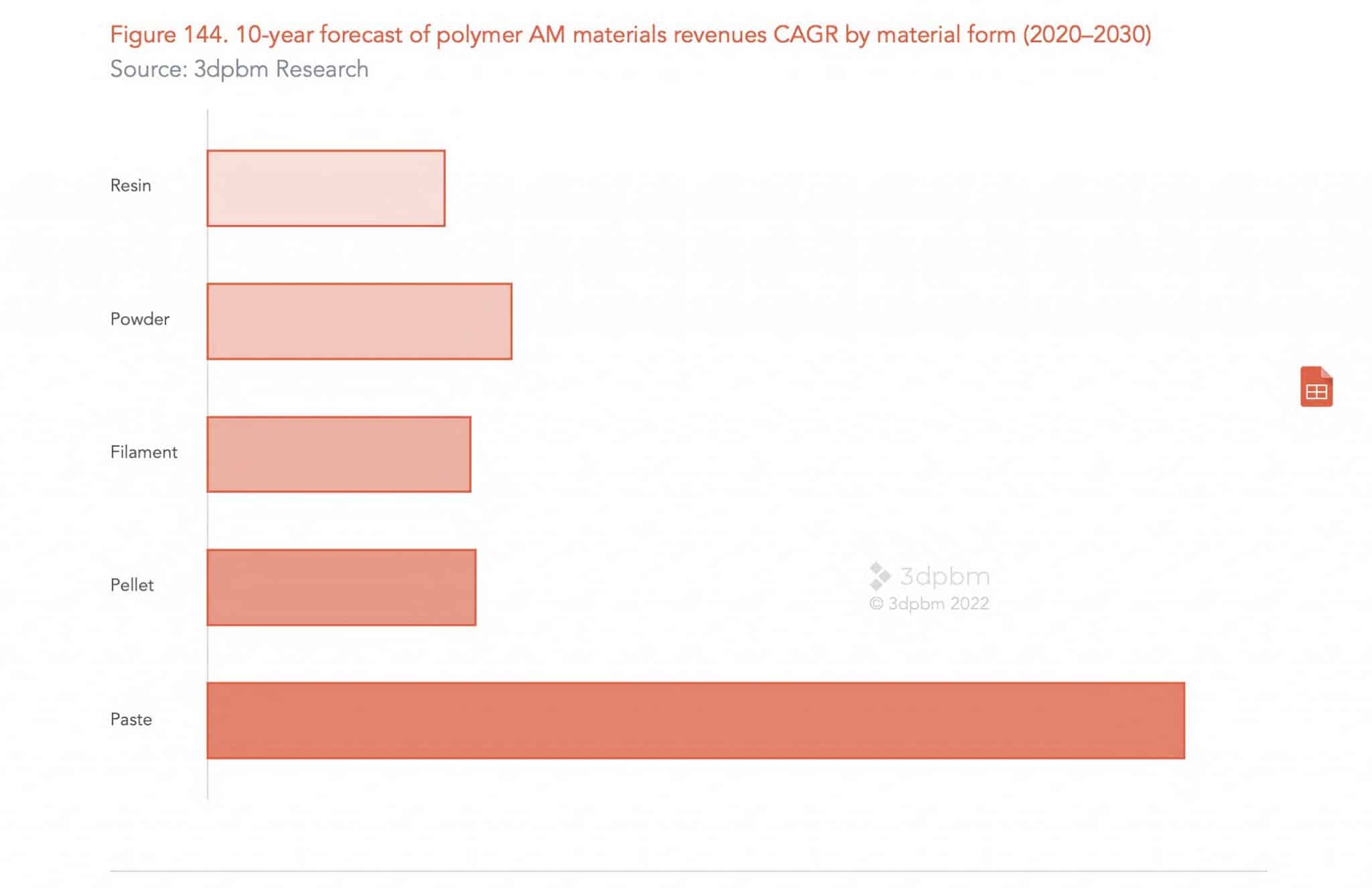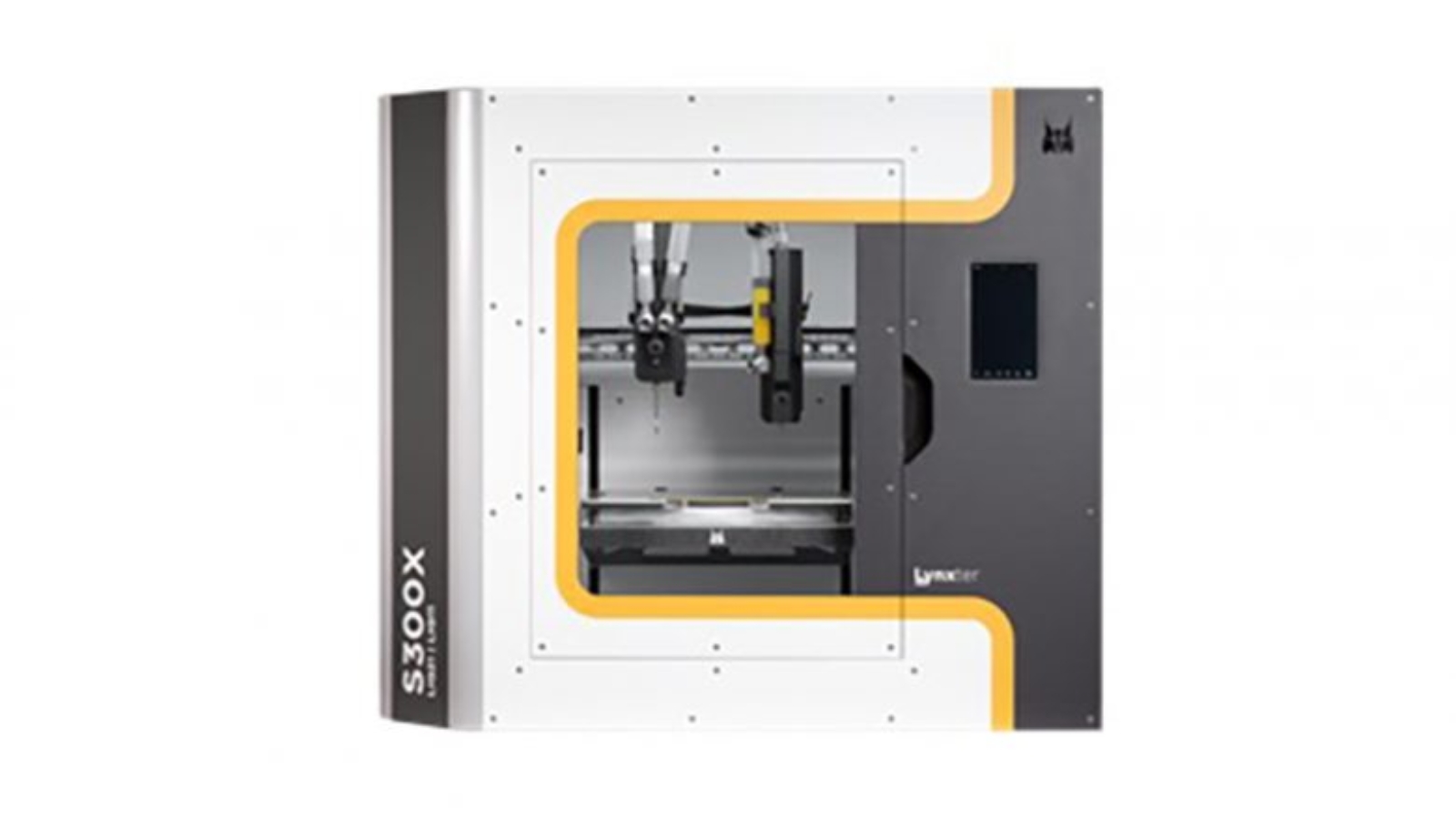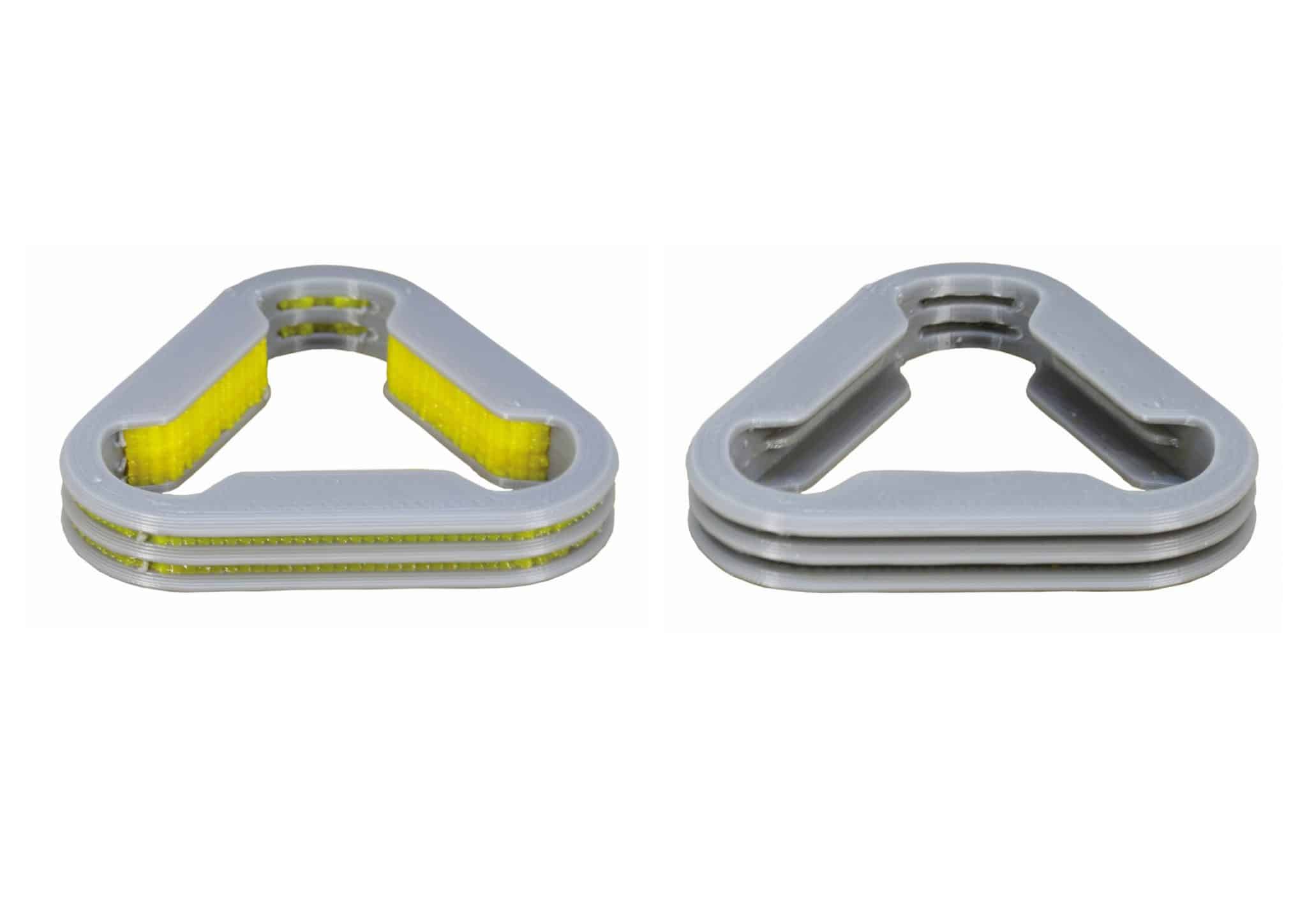As additive manufacturing continues to grow, one of the most challenging and high-potential segments of AM, that of reactive thermoset materials, remains largely unexplored. Only very few companies have fine-tuned technologies that can proficiently and cost-effectively use these materials. One of them is the French company Lynxter, which built up knowledge and experience in silicone 3D printing starting with the launch of the first S600D silicone 3D printer. Ongoing development at Lynxter has led to a new solution for the 3D printing of elastomers: the S300X silicone 3D printer.
According to 3dpbm’s latest Polymer AM Opportunities and Trends 2020 – 2030, thermoset (paste) 3D printing is at the same time by far the smallest material segment and (as a result of its high long-term potential) also by far the fastest growing in terms of CAGR out of polymer AM materials [ask for an excerpt]. The most common thermoset materials used in 3D printing include silicone, polyurethane and epoxy, which are also among the most widely used thermoset materials generally. Due to their high viscosity, thermosets such as polyurethane and silicone are difficult to print with extrusion technologies, requiring extensive manipulation of both material chemistry and hardware system mechanics.

The S300X was built for printing medical and industrial-grade silicones and polyurethanes. It does this by enabling more geometrical freedom integrated printed support technology. A compact, reliable and sturdy industrial tool with an open philosophy, the S300X can be used for producing customized masking parts for post-processing (painting, sanding, plasma treatment etc.), dampers, seals, orthoses certified for skin-contact and textiles with additional functionality.
The launch of the new S300X machine also coincides with the release of Lynxter’s own range of materials, including industrial-quality SIL001 silicone.
Manufacturing on Demand
̈S300X, the rapid response capabilities of 3D printing, are now available in industrial and medical grade silicone and polyurethane”, said Thomas Batigne, CEO of Lynxter.
Through this innovation, Lynxter looks to democratize printing with silicone. A simplified, affordable and open solution designed for multiple applications: industrial (seals, masking, maintenance etc.), R&D (prototyping, material formulation, soft robotics) and medical (epitheses, protheses, orthopedics). In the medical field, silicone additive manufacturing makes it possible to produce custom-made devices without taking a manual impression or using a mold. It also allows hollowing and the variation of infill rates to render parts lighter or modify their properties (reduce hardness, add resistance, better damping, from anisotropy to the printed part etc.)
The S300X silicone 3D printer can print a variety of materials including medical grade RTV2 silicone (5, 10, 25, 40 ShA) certified ISO 10993-05 for contact with skin, industrial grade RTV2 silicone (45shA) and polyurethane (from 50 to 85 ShA). These age-resistant silicones require no heavy post-processing and possess mechanical properties equivalent to injection molding.
You might also like:
Bosch developed 3D printer MVP, based on pellet BIAM extrusion: The strangest part of all this is that, while the system was apparently released in June 2022, very few people seem to know about it and no media has reported the story yet. The reason for this is that the 3D Printer MVP is going to launch as a minimum viable product (MVP), for a selected group of customers, in the beginning of 2023, as Bosch Industrial Additive Manufacturing Industrial Design Engineer, Alex Voigt, revealed on his LinkedIn page.
* This article is reprinted from 3D Printing Media Network. If you are involved in infringement, please contact us to delete it.
Author: Davide Sher



Leave A Comment